Sulawesi shrimps are small, tropical shrimps endemic to the ancient lake systems in Sulawesi, one of the 4 Greater Sunda Islands, also the 11th largest island in the world. They are immensely popular in the shrimp-keeping hobby due to their vibrant colours and ability to thrive in warm temperatures. In the aquarium trade, they are affectionately referred to as “Sula”, which is short for Sulawesi shrimps.
All of the shrimps featured in this page are from the aquarium trade and bred in captivity. The list is far from complete, so I will be adding more photos as and when I get access to more species.
Macro Photography Equipment Used
I started this page with most of the photos taken on a mobile phone, but have been replacing some of them with new shots from an entry level camera (see below).
- Samsung Galaxy S9+
- APEXEL 100mm macro lens attachment
- Chihiros RGB A601 Plus
Recent photos were taken with an entry level Micro Four Thirds camera (much cheaper than my phone).
Settings at 2x magnification were at F/6.3, 1/200s, ISO200, flashes at 1/4 power.
- Olympus OM-D E-M10 Mk4
- Laowa 50mm f/2.8 2X Ultra Macro APO Lens for Micro Four Thirds
- Andoer AD560 IV 2.4G Wireless Flash x2 positioned above the tank
Refer to the section below on Shrimp Macro Photography Tips for pointers on getting better photos of your shrimps.
Camera Phone vs Dedicated Camera
For those pondering over getting a dedicated camera for shrimp photography, do note that it does not guarantee better pictures. It gets much more difficult to get usable photos when using a dedicated camera, so I still use both.
| Camera Phone | Dedicated Camera |
|---|---|
|
|
Sulawesi Lakes
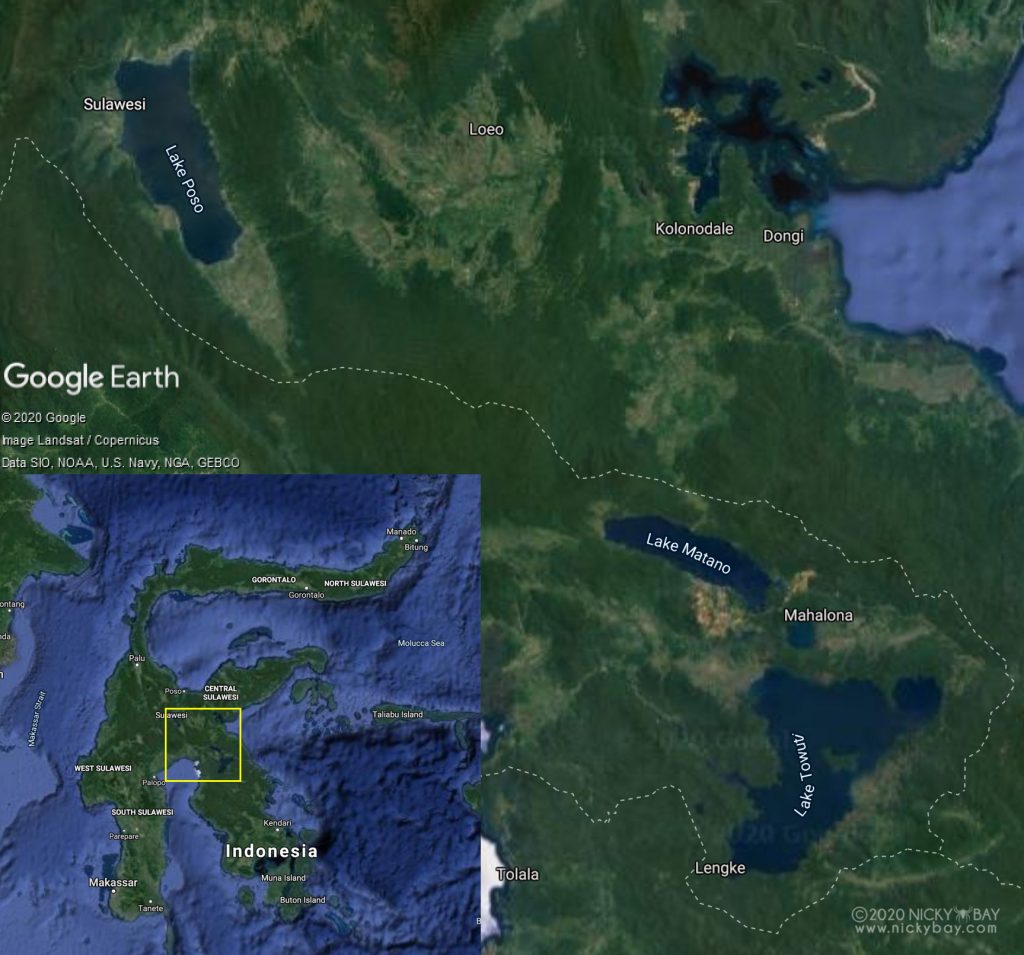 Image from Google Earth
Image from Google Earth
Most of the shrimps in this page are endemic to the ancient lakes of Sulawesi, primarily Lake Poso and the Malili Lake System which consists of 5 interconnected lakes drained by the Larona River towards Bone Bay.
- Lake Matano
- Lake Mahalona
- Lake Towuti
- Lake Lontoa
- Lake Masapi
Sulawesi Shrimp Keeping Tips
Sulawesi shrimps are generally shy and sensitive to water parameter changes, so extensive research should be done before diving into keeping these shrimps in your tank. Here are some general tips for keeping Sulawesi shrimps. These pointers can be subjective and not the biblical truth, so please do your own research on top of what you read here.
-
Nitrogen Cycle and Tank Maturity
Always ensure that your tank is well cycled and mature before adding any shrimps, with sufficient beneficial bacteria to convert the Ammonia and Nitrites to Nitrates. There must be an Ammonia source in the cycling phase. Give the tank time to mature, as impatience will usually lead to shrimp deaths. A tank is cycled only after Ammonia and Nitrites drop to zero, and Nitrates are present. Use reliable test kits such as the API Freshwater Master Test Kit.
-
RO/DI and Remineralisation
Although the use of tap water is possible in keeping Sulawesi shrimps, using RO/DI filtered water at 0 TDS with a consistent remineralisation regime is much more reliable than using tap water. Essentially, the contents of tap water is unknown and inconsistent, and possibly subject to sudden changes which can be disastrous to shrimps. The most popular remineralisation salts designed for Sulawesi shrimps are Salty Shrimp 8.5, Salty Shrimp 7.5, Borneo Wild 7.5, Borneo Wild 8.5 and Dennerle Shrimp King Sulawesi Salt. It is also possible to remineralise with general water conditioners and use volcanic rocks to buffer the pH. In short, there are many methods and there is no best and easiest way to do it.
-
Water Parameters
Have in hand some tools to monitor the water parameters. Most notably, temperature, pH, KH and GH. Each species may come from different parts of different lakes and require different water parameters, so research is essential before getting any shrimps. More importantly, keep the water parameters consistent. If any parameter is out of whack, never attempt to “fix” it quickly. Sudden changes in water parameters will almost definitely shock the shrimps. Use only liquid test kits as test strips tend to give inaccurate results. Do note that different brands and age of pH, KH and GH test kits can give different results at times. The API GH/KH Test Kit and API High Range pH Test Kit are popular choices, although I find that the API KH test produces lower than actual results.
The following parameters work pretty well for the easier-to-keep Sulawesi shrimps. This is just a rough guideline. Remember that consistency is more important than chasing water parameters.
- pH 7.5 to 8.5: Some difficult species may require a higher pH, but many species can do well in the range of 7.5 to 8.0.
- GH 7: A good GH level with sufficient amounts of Calcium and Magnesium will allow the shrimps to moult healthily.
- KH 6: A decent KH level helps to keep the pH from drastic swings.
- Temperature: 27-28°C/82.4°F is a good target. Some species are known to inhabit colder waters in the lakes, so research the species first and consult the breeder. On this note, I would recommend either a chiller or heater to keep the temperature consistent. Try not to rely on cooling fans as the tank temperature will still fluctuate based on the room’s temperature.
-
Good Oxygen Levels
Sulawesi shrimps appreciate high oxygen levels. To achieve that, just ensure a good amount of water surface agitation. This is usually done with air stones or water filter outlets positioned at the water surface.
-
Drip Acclimation
When introducing shrimps to the tank, always use drip acclimation. I personally float the shrimps in a container in the tank and drip using the tank water in a cup above at about 1 drop per second for about 1 to 2 hours. This ensures that both water composition and temperature would be gradually adjusted to that of the tank.
-
Water Change
Do regular water changes to keep Nitrate levels low, and try to siphon any organic waste during water changes. To avoid accidentally sucking up shrimplets, use an airline hose tied to a pipette/turkey baster to disturb and suck up any detritus in the substrate. It is possible to use floating plants to lower nitrates and reduce the water change frequency. To minimise shock to the shrimps, it is recommended to only do small water changes (about 10%).
-
Food
Make sure any food in the tank is consumed or removed after a few hours. Any leftover food would cause a spike in Ammonia and potentially crash the Nitrogen cycle. When starting on powder food, start with very small quantities and monitor the shrimp activity. Products like GlasGarten Shrimp Baby Food and Dennerle Shrimp King Baby Freshwater Dwarf Shrimp Food are popular choices. From some experiments, Hikari Crab Cuisine also appears to be well received by species like White Socks.
Some shrimp keepers allow walls of algae to grow during the tank cycling phase. This would be good for shrimp that are not used to consuming commercial food yet.
-
Hiding Places
Ensure enough hiding places in the tank with rocks, caves, moss or plants. This gives them sufficient spaces to moult safely. Oddly enough, when there are more places to hide, they would come out more often to graze.
-
Tank Mates
The tank should not house any fishes. Even the presence of herbivores or small fish that would supposedly not eat shrimps will still stress the shrimps. A single Sulawesi/rabbit snail can be considered as a tank mate. A larger initial shrimp population also encourages the shrimps to come out from their hiding places more often and gives them better breeding chances.
-
Shrimp Source
Wild-caught shrimps are generally much cheaper, but not recommended because they are usually not sustainably caught and most of them will not acclimate well in tank conditions. Some may even come with parasites. In many cases, the casualty rate can be expected to be at around 80%. Tank-bred shrimps are more expensive, but if obtained from reputable breeders, you can be assured that they do well in tank conditions and are free of parasites.
Shrimp Macro Photography Tips
Aquarium macro photography is very different from terrestrial macro photography, so I’ve compiled a list of tips for better macro photos of shrimp. These tips apply whether a mobile phone or a DSLR is used.
-
Clean the glass
Obvious point, but often overlooked. A dirty tank glass will result in dirty-looking pictures. Always clean any algae and dirt off the front glass of the tank before any photography session, and wipe the outer surface with a lint-free cloth. It may not look obvious, but there would almost always be algae build-up, and the outer surface may have fingerprints, water stains, etc.
-
Keep lens parallel to tank glass
Average-sized tanks would have a glass thickness of at least 6mm. Shooting at an angle from the glass would typically result in severe distortion and a drop in image quality. Always ensure that the camera or lens is parallel to the glass surface. One way to ensure this is to press the lens flat onto the glass surface. This also keeps the camera steady for sharper photos.
-
Plastic vs glass tank
For macro photography of shrimps, always use a glass tank. Plastic tanks do not have perfectly smooth surfaces, and the imperfections will show up in close-ups, especially when the shrimp is close to the front of the tank.
-
Use a macro lens
Dwarf shrimps are small. Even larger adults would only be about 2cm long, so a macro lens or macro lens attachment would help a lot. I use the APEXEL 100mm macro lens on my mobile phone for most of the shots on this page. For interchangeable lens systems, you can also use extension tubes to increase your magnification.
-
Use longer focal lengths
A narrow field of view (longer focal length) is desired due to potential distortion from the tank glass. To see the maximum effect of distortion, use a wide angle lens and shoot with the lens pressed against the tank glass.
-
Shoot in a dark room
Start your photography session when the tank room is dark. At night, switch off all the lights except for the tank light. This prevents stray light from entering the lens, and ugly reflections of yourself or your camera in the pictures.
-
LED lighting
When not using a flash, a powerful aquarium LED light will improve the image quality significantly. It allows you to keep the ISO low and shutter speed high. However, do note that when your LED lights are at full power, the shrimps would rather hide — especially the sensitive ones. If you have sensitive shrimp, try putting a little bit of food near the front of tank and switch off the lights for an hour or two, then switch on the LEDs when you are ready to shoot. Some species like Mini Six Stripes would hardly be visible when the lights are strong. For such species, you can only have the LEDs at low power and rely on flashes for lighting.
-
Flash photography
Never use a flash on the camera or hot-shoe as it will result in reflections off the tank glass. Any flash used should be placed above the tank and pointing at the shrimp. Ideally, the flash should be diffused as well to avoid harsh highlights.
-
Mobile phone vs DSLR
The best camera is the camera in your hands. Mobile phone cameras are much easier to use for shrimp photography due to the small sensor size. A smaller sensor size means that the depth of field is much deeper (i.e. more of the shrimp can be in focus in a single frame). However, the small sensor also limits the image quality. For high-resolution and tack-sharp photos, a large sensor camera with a dedicated macro lens is ideal but several times more challenging.
-
Shrimp position
Make sure that the shrimp’s body is parallel to the lens surface to get maximum depth-of-field. To encourage shrimps to hang out close to the front of the tank, try positioning some rocks or hardscape a few cm away from the front of the tank.
-
Digital zoom
Refrain from using digital zoom when the shrimp is too far away from the tank glass. It may appear to give you added magnification, but the image quality would drop significantly.
-
Understand the shrimps
Observe the shrimps regularly and note down the times when they tend to come out to graze or feed. Those would be the best times for photography.
-
Sit in front of the tank often
Spend more time sitting in front of the tank(s) to observe the shrimps. You will find more interesting scenes to photograph.
-
Switch off filter and air pump
Switching off the filter and air pump during photography sessions will reduce the amount of distracting floating detritus that will appear in your photos. Switch off and give it a bit of time for everything to settle. Just remember to switch them back on when you are done!
-
Feeding shrimps
There are advantages and disadvantages to feeding the shrimps during photo shoots. The obvious advantage is that you can get many of them to gather near the front of the tank. However, they are much more active during feeding and are less likely to sit still. They would also kick up a lot of detritus during the movement. They appear to stay at the same spot but are actually shifting around continuously. Lastly, having a group of shrimp together means that they can block each other. You may find yourself cursing other shrimps swimming to the front to block your targeted shrimp.
Pink Boxer Video
Just for fun, I’ve compiled a short video showcasing the fanning action of the pink boxers, also known as Taipa shrimp. Note that there is a spelling error in the Latin name, which should have been Caridina longidigita instead. The entire footage was also captured using my mobile phone.
Differentiating Caridina woltereckae from Caridina spongicola
Caridina woltereckae and Caridina spongicola can easily be confused both in the field and in the aquarium trade. Here are some of the differences based on Von Rintelen & Cai, 2009.
Despite the documented differences between the two species above, I have not seen any berried Caridina woltereckae based on the relative rostrum length. The only ones with the longer rostrum appear to be male, which led me to suspect that those in the aquarium trade belonged to the same species with some sexual dimorphism.
Phylum: Arthropoda von Siebold, 1848
Subphylum: Crustacea Brünnich, 1772
Class: Malacostraca Latreille, 1802
Order: Decapoda Latreille, 1802
Family: Atyidae De Haan, 1849
Genus: Caridina H. Milne-Edwards, 1837
Caridina caerulea von Rintelen & Cai, 2009
Caridina dennerli von Rintelen & Cai, 2009
Caridina glaubrechti von Rintelen & Cai, 2009
Caridina holthuisi von Rintelen & Cai, 2009

Caridina holthuisi von Rintelen & Cai, 2009 ♀
Trade Names: Six Banded, Matano Tiger
Distribution: Lake Matano
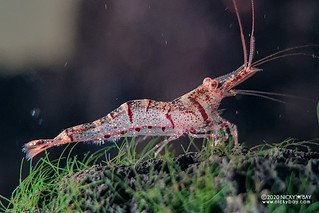
Caridina holthuisi von Rintelen & Cai, 2009 ♂
Trade Names: Six Banded, Matano Tiger
Distribution: Lake Matano

Caridina holthuisi von Rintelen & Cai, 2009 ♀
Trade Names: Six Banded, Matano Tiger
Distribution: Lake Matano
Caridina loehae Woltereck, 1937
Caridina longidigita Cai & Wowor 2007

Caridina longidigita Cai & Wowor 2007
Trade Names: Pink Boxer, Taipa, Fan Shrimp
Etymology: longus=long, digitus=finger
Distribution: Lake Poso

Caridina longidigita Cai & Wowor 2007
Trade Names: Pink Boxer, Taipa, Fan Shrimp
Etymology: longus=long, digitus=finger
Distribution: Lake Poso

Caridina longidigita Cai & Wowor 2007
Trade Names: Pink Boxer, Taipa, Fan Shrimp
Etymology: longus=long, digitus=finger
Distribution: Lake Poso
Caridina poso Klotz, Wowor & von Rintelen, 2021
Caridina profundicola von Rintelen & Cai, 2009
Caridina serratirostris De Man, 1892
Caridina spinata Woltereck, 1937
Caridina spongicola Zitzler & Cai, 2006
These could possibly be the female Caridina woltereckae instead of Caridina spongicola.
Caridina striata von Rintelen & Cai, 2009
Caridina woltereckae Cai, Wowor & Choy, 2009
Caridina sp. “tigri”
Caridina sp. “Black Galaxy”
Caridina sp. “Red Line Blue Dot”
Caridina sp. “Red Line Yellow Tail”
Caridina sp. “Mini Six Stripe”
This is the smallest species in this list and are extremely shy. The adults are about half the size of larger species like blue poso and six-banded. They typically only come out from under the rocks in the darkness when the lights are off for some time.
Other Sulawesi Species
This list is far from complete. Some other common species in the aquarium trade are listed below.
| Species | Trade Names | Distribution |
|---|---|---|
| Caridina ensifera Schenkel, 1902 | Poso Glass | Lake Poso |
| Caridina masapi Woltereck, 1937 | Six Banded Blue, Towuti Tiger | Malili Lakes |
| Caridina dennerli | Blue Ghost | Selectively bred from Caridina dennerli |
References
- Malili lake system
- Freshwater Shrimps from Sulawesi
- Cardinal Sulawesi Shrimp – 蘇蝦 (HK)
- von Rintelen, K. & Cai, Y. (2009) Radiation of endemic species flocks in ancient lakes: Systematic revision of the freshwater shrimp Caridina H. Milne Edwards, 1837 (Crustacea: Decapoda: Atyidae) from the ancient lakes of Sulawesi, Indonesia, with the description of eight new species
- Klotz, W. & von Rintelen, K. (2013) Three new species of Caridina (Decapoda: Atyidae) from Central Sulawesi and Buton Island, Indonesia, and a checklist of the islands’ endemic species
- Klotz, W., Wowor, D. & von Rintelen, K. (2021) Lake Poso’s shrimp fauna revisited: the description of five new species of the genus Caridina (Crustacea, Decapoda, Atyidae) more than doubles the number of endemic lacustrine species

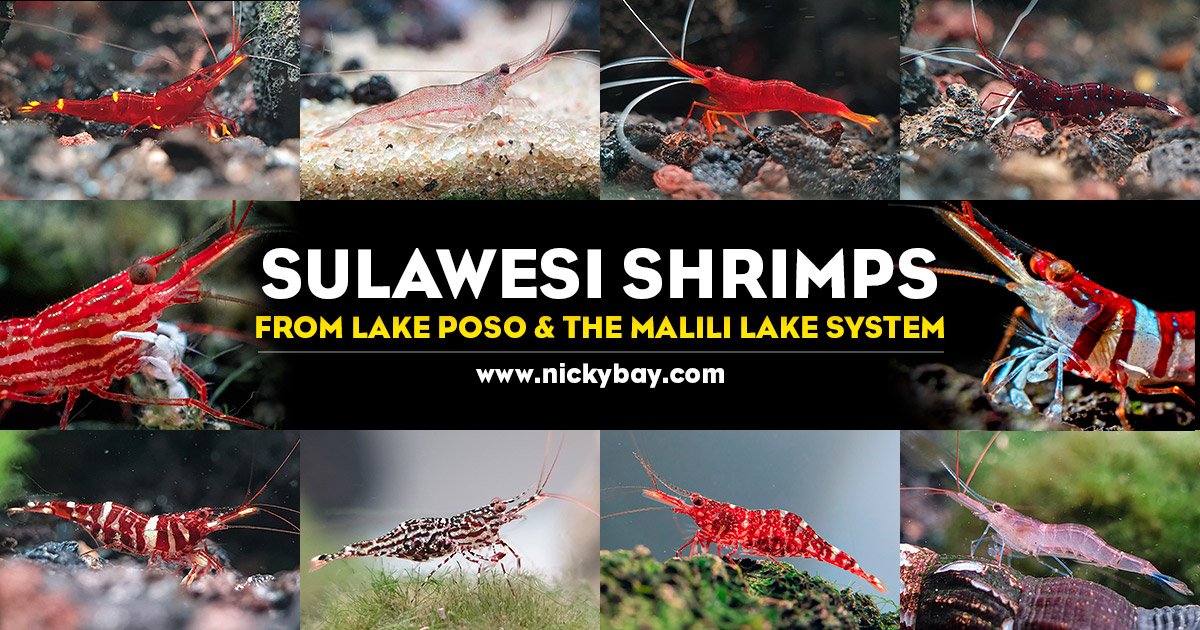





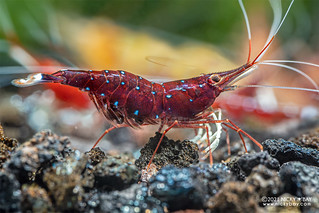
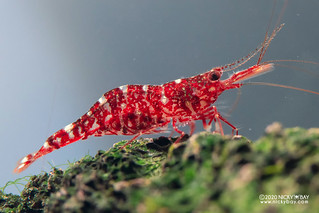


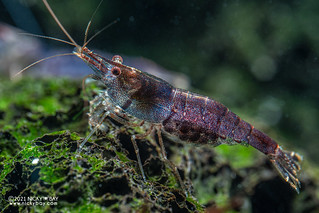
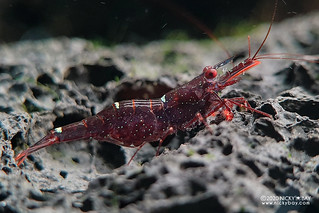


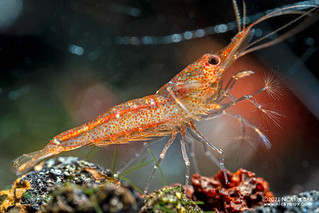

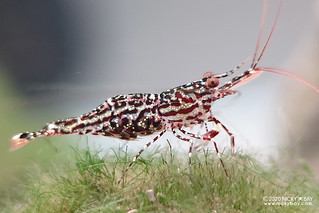
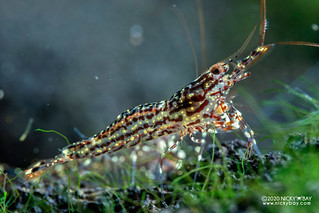

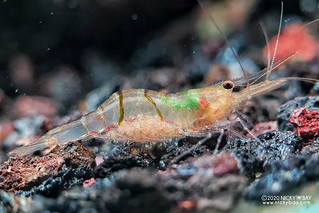







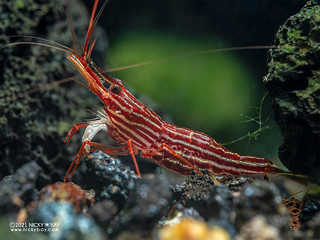


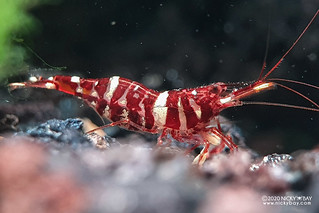


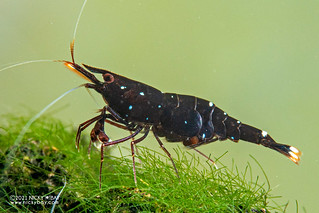


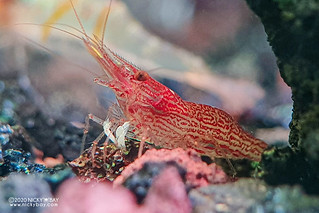

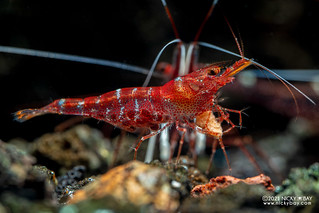
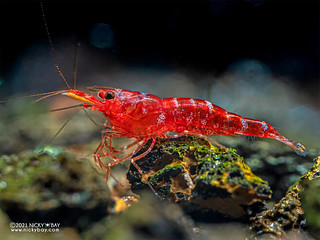
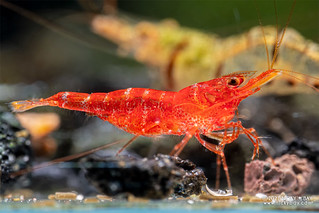
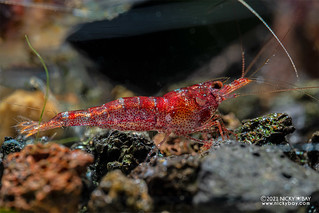




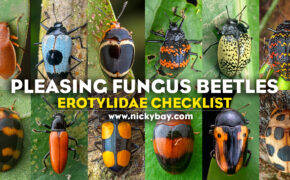
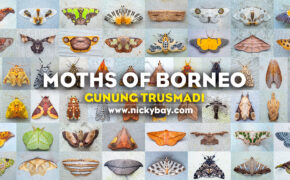
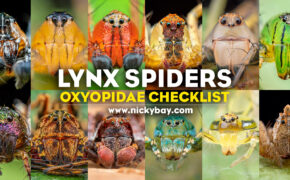












Vimukthi Weeratunga
Dear Nicky,
I am doing serous nature photography for 30 years and recently started macro photography. I an super impressed with your dedication and the collection.
I am very much interested photograph luminous mushrooms & jumping spiders of Singapore. Please let me know if there is a tour or visit, which I can pay.
I am based in Sri Lanka.
Regards,
V.
Nicky Bay
Hi Vimukthi,
Thank you for your message. Luminous mushrooms are very rare and highly dependent on the weather. It won’t be possible to predict the sightings until a steady mycelium is spotted.
As for jumping spiders, they should be found in almost every nature park. It is easier to see them early in the day when they are more active.
Sorry I don’t do tours as there’s no guarantee to seeing any of the above.